Neuguitars 2024 #29 Deconstructed Exchange or Deconstructive Empathy...Free Jazz without compromise with the duo Masayuki Takayanagi and Kaoru Abe
The term "cult" is an ontological shorthand that indicates an exceptional and timeless status. When talking about records, this attribute is often linked to factors such as the quality of the musicians and their rarity, as in the case of the album Kaitaiteki Kokan (sometimes also written as Kaitai Teki Kokan), recorded by the duo Masayuki Takayanagi and Kaoru Abe. The title, which can be translated into English as Deconstructed Exchange or Deconstructive Empathy, explicitly refers to both the music contained in the record and the situation that is created on stage when two musicians exchange ideas and "deconstruct" them on a continuous basis.
Behind this CD, recently reissued, the "cult" factor, its exceptional status is reflected both on a material and emotional level. The album was released in 1970 in Japan, in only, it is said, 100 copies. It is one of the rarest albums ever, it is very rarely offered at auction and has never been traded on Discogs.com. It is rumored to have sold for a maximum price of 4000 US dollars. It is therefore an obscure collector's item for true fanatics. But that is not all. This album shows an equally important status as a form of artistic expression, this is because it is one of the most radical demonstrations of free jazz music, not only Japanese.
The album was recorded by two Japanese musicians known for their extreme positions: Masayuki Takayanagi (高 柳 昌 行) - electric guitar and Abe Kaoru (阿 部 薫) - saxophone. The album was recorded live, during the concert held on June 28, 1970 at the Kōsei Nenkin Kaikan hall in the city of Shinjuku. Masayuki Takayanagi also appears as a record producer, while the sound engineer is Kozuo Kenmochi. In addition to the saxophone, Abe Kaoru also plays the bass clarinet and harmonica.
MASAYUKI TAKAYANAGI, born December 22, 1932 in Tokyo. He began his professional career in 1951. He founded his first of many groups called New Direction in 1954. From then on, he was a key member in almost every avant-garde musical group in Japan. Takayanagi was a true outsider, never being taken into consideration by the mainstream music press. He died on June 23, 1991.
ABE KAORU was a Japanese free jazz musician and saxophonist, known not only for his music, but also for his wild and wild life and for his wife, Suzuki Izumi, a popular science fiction novelist. He was born on May 3, 1949 in Kawasaki, Kanagawa District. He left school at age 17, moving to Shinjuku, a city that then, as now, seems to have been something of a center for counterculture and a welcoming environment for the kind of music he would go on to play. Entirely self-taught, he made his debut at age 19, eventually developing a unique technique on the saxophone. His playing was strongly rooted in the hours he spent practicing alone; most of his recordings and performances are solo (this seems to have been due to his tendency to literally play over potential collaborators), leading to his reputation as a rather "selfish" musician. The normal pattern for Japanese jazz musicians was to study with older professionals, practice regularly with other musicians, and eventually make their professional debut. Abe broke these rules from the start. He died on December 9, 1978 in Nakano (a district of Tokyo), of a drug overdose.
The album Kaitaiteki Kokan (Kaitai Teki Kokan) was originally released in 1970 as an LP. The first reissue was produced in 1999 by the DIW record label, while a few additional copies of the reissue were released a year later. In 2017, the record label Craftman Records, which specializes in reissues of Japanese albums, mainly jazz, released the first reissue on 180g black vinyl.
The CD you see in the photos is a very elegant “mini LP”, a replica of the vinyl version, with a cover in beautiful black paper with silver letters. In order not to alter the graphic composition, the OBI has also been reduced. The disc was pressed using the Ultimate HighQualityCD (UHQCD) technology, an improved version of the HQCD. The intensity of the music is overwhelming and, literally, hits you in the head like a baseball bat, so the technical aspect of the musical message, the quality of the sound, becomes less important in my opinion. The reissue of the album Kaitaiteki Kokan, in fact, was not made using the analog master tape or its digital copy, but directly from an LP, with a technique called “needle drop”. Listening to the CD with headphones you will hear an imperceptible background noise: it seems that the disc has been remastered with the aim of eliminating high-frequency components and noises, but without completely removing the noise. The instruments are recorded from a certain distance, have little volume and the frequencies are concentrated in the mid-range. Their sound is penetrating, including the harmonic that enters in the first minute of the second track. The electric guitar was recorded from a microphone placed in front of the amplifier. Penetrating and, at times, almost irritating. Not for how they sound, but for the music itself. If I had to make a comparison, the interaction between the two instruments is more like a street discussion than a conversation. I don't know how the sound engineers did it, but the final result is not tiring anyway. Of course, provided that this is the music you are looking for. The recording volume is low, it has virtually no depth or texture, but it is still interesting, engaging and mesmerizing. I would define this album as: a mesmerizing and subliminal message. After the initial shock, the musicians give 100% from the very beginning, we start to accept it and then we get involved in the musical message. The sound is obviously not the best possible, but after a moment we stop paying attention to how it all sounds, or even to the music being played, as we are in a parallel universe, out of time and planet Earth. Recorded on June 28, 1970 and released in September of the same year, this album has always been seen as an important meeting between two of the most important exponents of Japanese free music. It is perhaps the most heavily fetishized album to ever emerge from the Japanese underground. As I said before, it is a cult album. Abe played his first duo with Takayanagi on May 7 of that year, a concert that was billed as “Masayuki Takayanagi New Direction” (the concert flyer was apparently titled in English “New direction for all who are interested in jazz” and subtitled, in Japanese, “Projection towards the annihilation of jazz”); the June 28 concert that was released as Kaitaiteki kokan was, confusingly, billed as New Direction. Aficionados are probably still debating whether the record is more correctly labeled as a Takayanagi/New Direction(s) album or a Takayanagi/Abe duo. Regardless, DIW opted for the latter form. The two continued to play together for a few more concerts under the name Takayanagi New Direction, adding Yamazaki to the group; their last concert was in early October, after which the Takayanagi/Abe association seems to have ended. The music resembles a pitched battle, with the two seemingly playing against each other: Takayanagi, on electric guitar, plays in a recognizably "jazz" style, amplifying and distorting motifs, methodically separating them with a thin, harshly brittle feedback tone that is often jarring to listen to; Abe wails regardless, full of bravado and seemingly paying little attention to his partner, behavior not entirely uncharacteristic of him at this point in his career. The two mostly sound as if they are playing at the same time but not together, and moments of interaction are few and far between. This record represents an extreme case of the inclination toward autonomy in improvised music, well beyond Cageian anarchic liberalism.
The two musicians seem to prefer clashing and arguing, attacking each other before the commonality can solidify into a convention. An album that still sounds extraordinary: the expression of something primal, almost prehuman, in which the stable musical space is replaced by a sound world torn from the release of psychic energy, on the verge of disintegrating into chaos. An attitude not so different from that of their own lives. Like Abe, Takayanagi has left an indelible mark on the world of musical counterculture. At his best, alone or with his New Direction Unit (also known variously as New Directions and New Direction For The Arts), he operated at a level of inspiration that was perhaps superior to that of Sonny Sharrock, one of the few relatively comparable figures, and Takayanagi's recordings from that decade are just examples of what's possible when the technique and skill of improvisation, the energy and dissonance of free jazz, and the volume and aggression of rock music meet inside a gravitational black hole. His influence can be clearly detected in modern heavyweights such as Rudolph Gray ( https://en.wikipedia.org/wiki/Rudolph_Grey ) and Stefan Jaworzyn ( https://www.thewire.co.uk/audio/tracks/listen_stefan-jaworzyn-music ). Unfortunately, Takayanagi also possessed an uncompromising character, quickly managing to completely out-of-joint with the jazz establishment in a fairly short period of time, living a forcedly marginal musical existence.
This album is not the only result of their collaboration. After “Kaitai Teki Kohkan” DIW produced “Mass Projection”
and “Gradually Projection”
which always maintain the same high standard and are also collector's items that I am trying to buy. The two are out of any rule, whether it is that of keeping jazz in standards or of wedging rock into refrains suitable for sale, mixing everything to the extreme, giving improvisation a new form, more brilliant and bastard. Disowned by the puritans, they did nothing to counteract this trend. They went ahead alone. Unconcerned. Recently Jinya Records has produced three more CDs:
“Live at Station '70”, the result of the recordings of the concerts held on June 18 and in May or June 1970, in Tokyo.
The second CD is entitled “Jazzbed”, a live recording at Jazzbed on September 27, 1970, again in Tokyo, with the presence of drummer Hiroshi Yamazaki. All with the same level of energy, creativity and brilliant madness.
"Masayuki Takayanagi & Kaoru Abe* = 高柳昌行* & 阿部薫* – Real Jazz = リアルジャズ" was produced on May 29, 2024 and is another discographic miracle for Takayanagi sufferers. This is another “The Disintegration of the Sympathetic”, a 1970 live studio recording by Masayuki Takayanagi and Kaoru Abe.
This is the miraculous discovery of forty minutes of live studio recordings by Masayuki Takayanagi and Kaoru Abe from July 1970 and therefore shortly after the original matrix of “Kaitai Teki Kōkan”, where we find a flow of continuous immediate improvisation, without any thematic motif noted. The tapes from which this material was recovered were in poor condition due to problems with the recording equipment and deterioration due to age, and have been restored. Although there are some parts that are difficult to listen to, I consider this CD fundamental in the study of Takayanagi as it is an important historical document.
I wonder if there could be any musicians like this today, but I don't think so. I think that Abe and Takayanagi were two “products” of a specific historical moment and a particular subculture. Forced to operate in a cultural periphery, they have fought all their lives to be able to express their music, accepting an outsider role that has slowly elevated them to the level of "cult" I spoke about at the beginning of this post. Their music has been passed down thanks to a circle, a group of loyal fans that has slowly grown, finding admirers even outside of Japan. Today they are experiencing a second youth thanks to a targeted series of excellent reissues. Welcome to the cult.




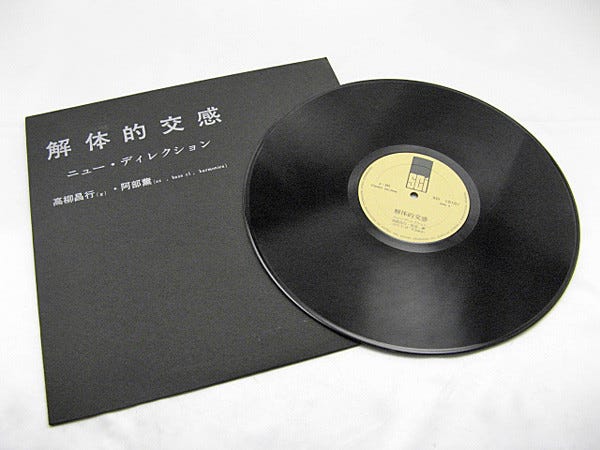

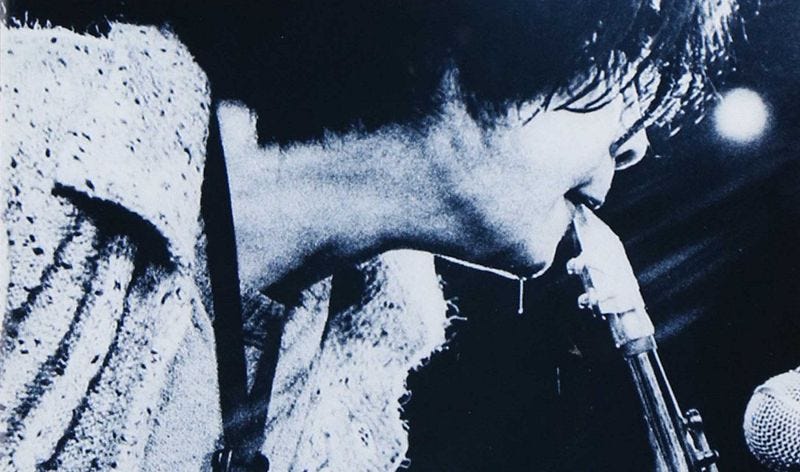
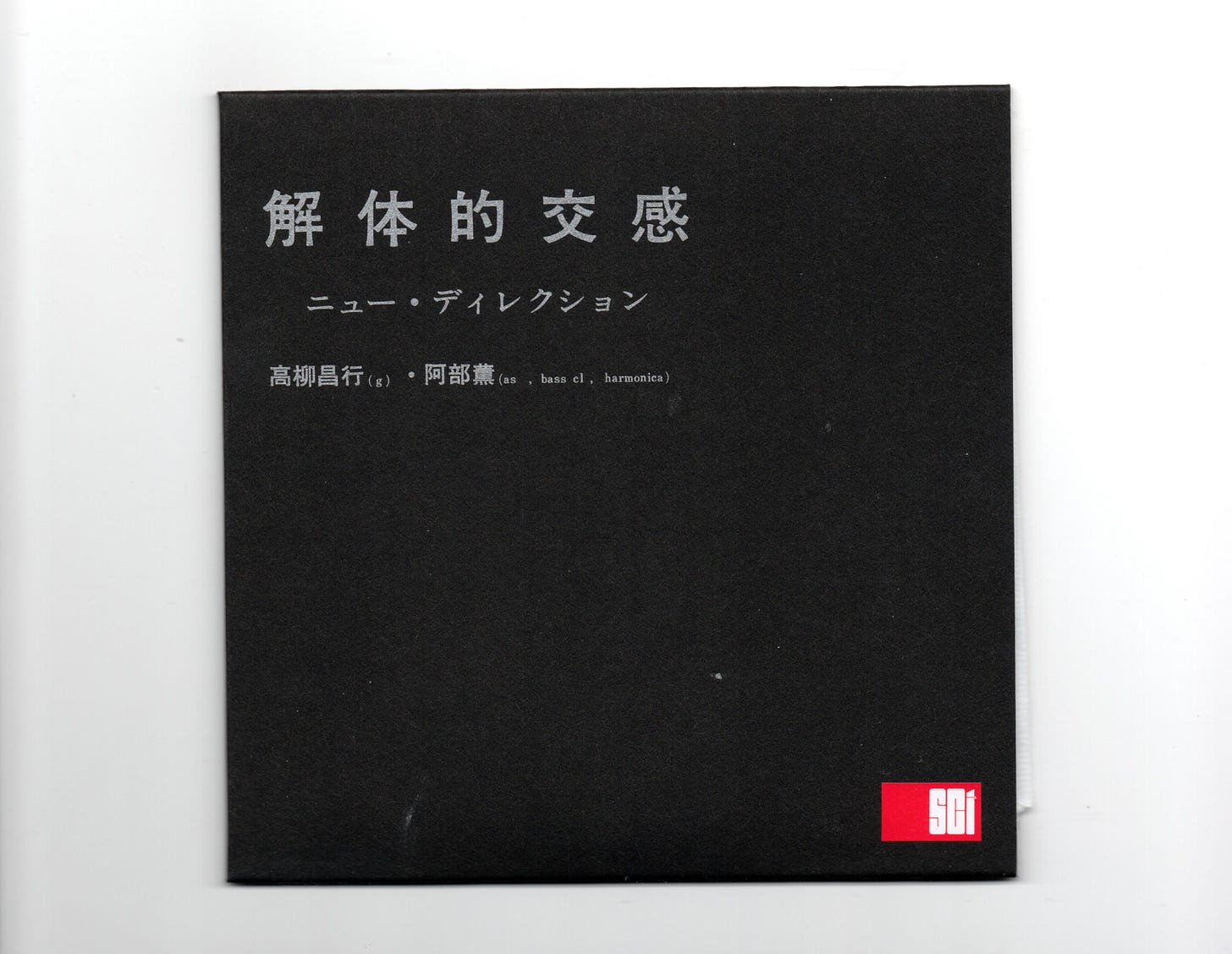
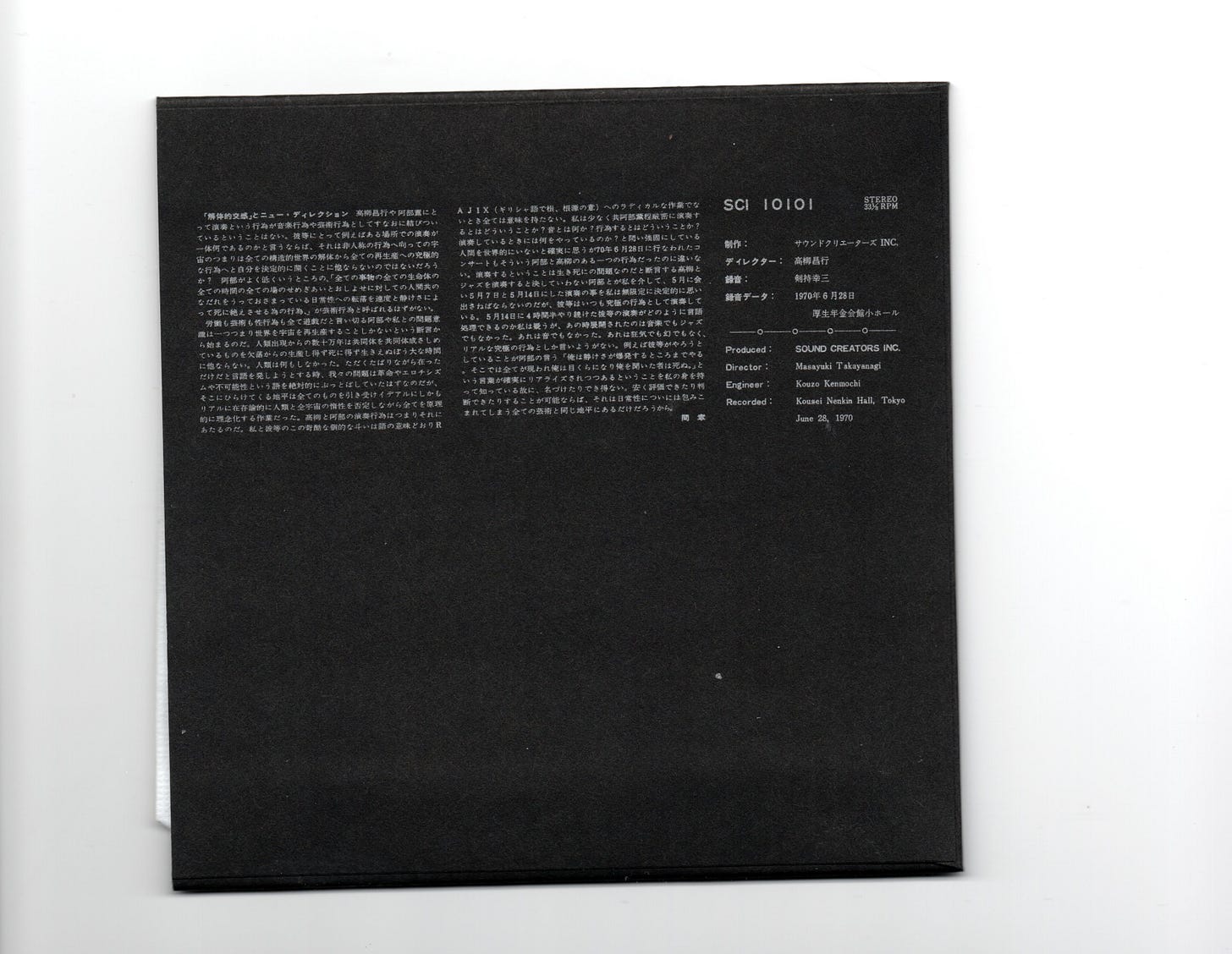
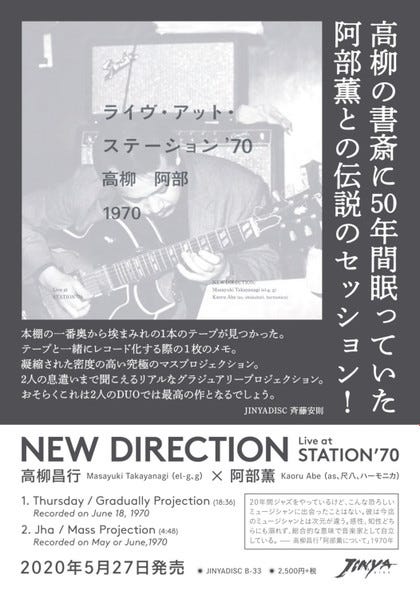
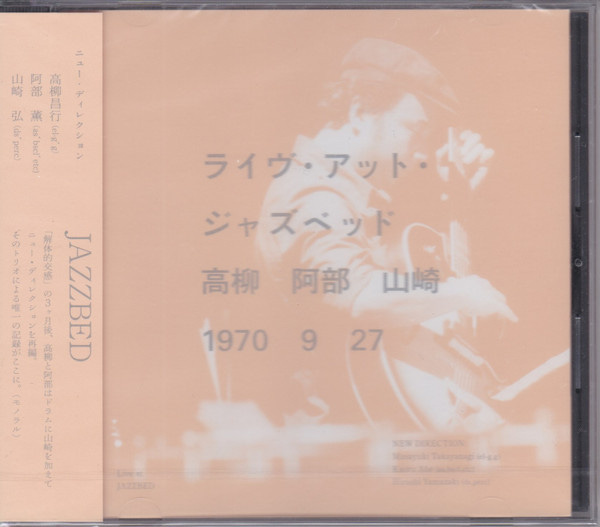
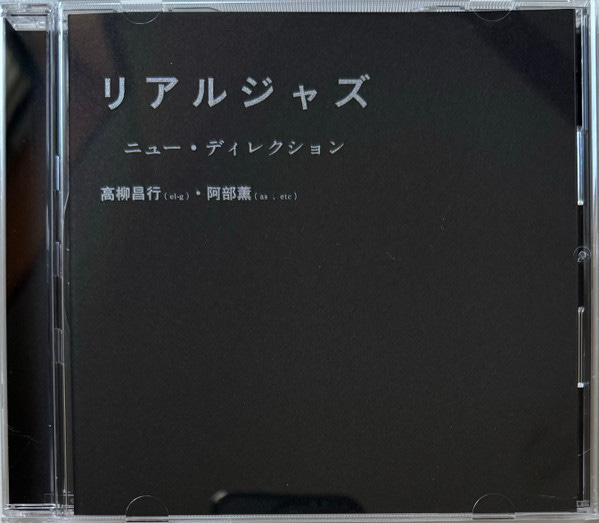
This is great stuff. Last year I read Teruto Soejima's "Free Jazz in Japan" and went on a Kaoru Abe binge. Looking forward to checking these albums out.
Free Jazz in Japan is an important document of an artistic era